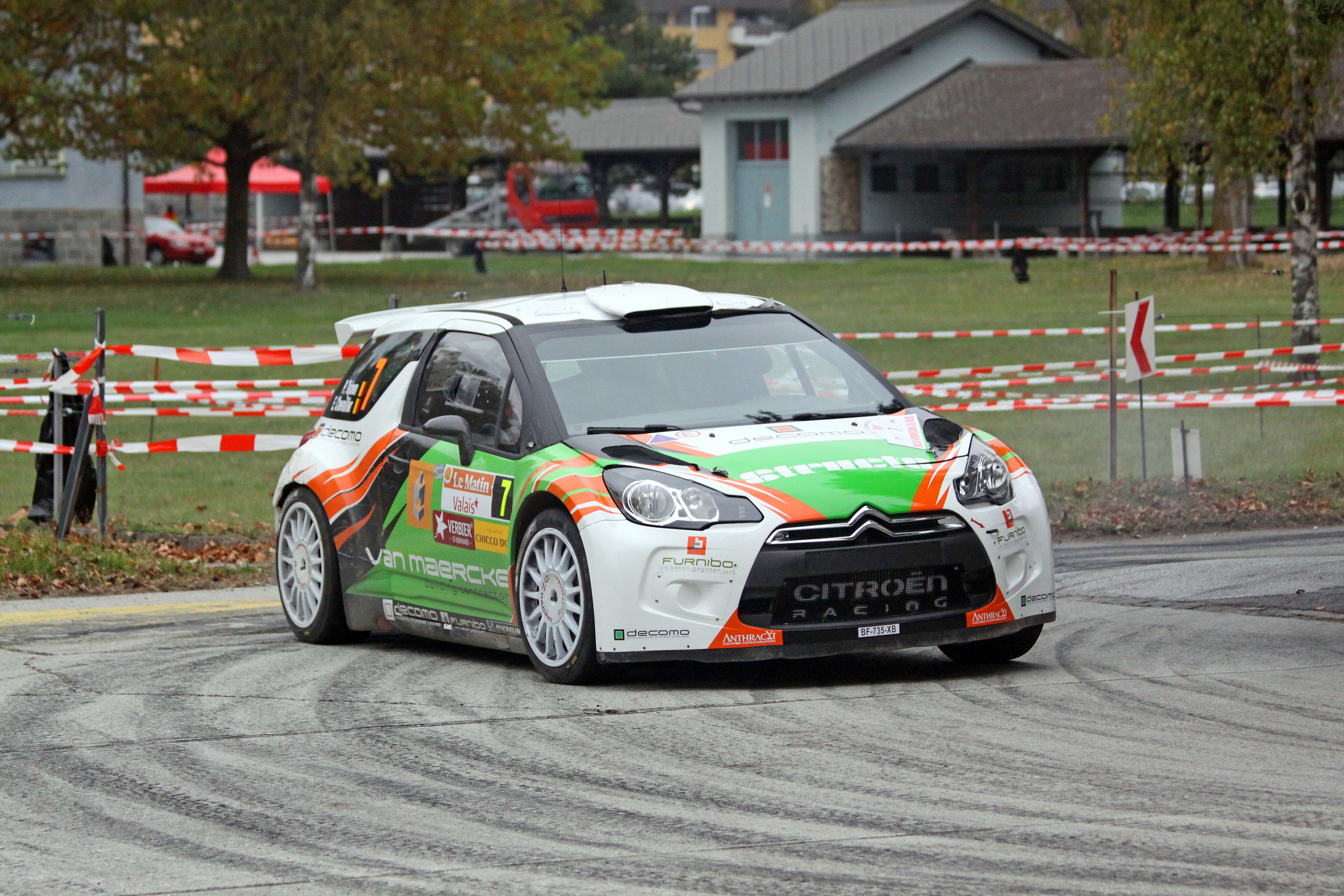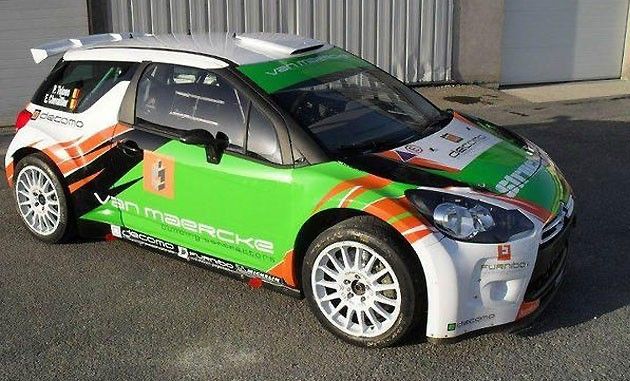Pending the final release of the 2012 WRC standings, the Citroën DS3 WRC is a two-time World Rally Championship->ke523 champion, which just solidifies the fact that it knows a thing or two about racing. On the heels of this championship, Citroën is set to debut yet another racecar, but this time around, it is for private owners only.
This new model, dubbed the Citroën DS3 RRC, is designed to run at rally levels just below the WRC, like the European Rally Championship (ERC), WRC-2, Middle East Rally Championship (MERC) or other national championships. Citroën->ke22 was very careful in its homologation of this model to make 100 percent certain it wasn’t stepping on its own tailpipe.
So can this baby-brother version of the championship-winning Citroën DS3 WRC be held up to the same relative standard as its big brother?
Click past the jump to read all about the Citroën DS3 RRC and find out.
2013 Citroën DS3 RRC
- Make: Array
- Model: 2013 Citroën DS3 RRC
- Engine/Motor: inline-4
- Horsepower: 275 @ 6000
- Torque: 258 @ 3250
- Transmission: 6-Speed Manual
- [do not use] Vehicle Model: Array
Exterior
The Citroën DS3 RRC’s body is made up of steel and composite fiber to help keep its weight as low as possible. In fact, it only tips the scales at 1,200 kg (2,645 lbs) at minimum, and can range upward depending on which class of racing you are heading into. The DS3 RRC isn’t overly large either. Actually, it is downright small, measuring in at just 3,948 mm (155.4 inches) long X 1,820 mm (71.6 inches) wide. It rides on a 2,461 mm (96.9-inch) wheelbase and boasts a stout 1,618 mm (63.7-inch) front and rear track.
On the outside, the DS3 WRC and DS3 RRC look nearly identical, save for a few regulatory changes. The RRC model boasts slightly smaller intakes on the front bumper and the rear spoiler is in compliance with S2000 regulations – Citroën doesn’t get into what exactly changes with the S2000 compliance though.
At the corners, you will get a set of 18-by-8-inch wheels for tarmac use and 15-by-7-inch wheels for use in gravel and snow. Both rims sets are wrapped up in Michelin rubber.
The press photo car is, of course, wrapped up in corporate livery, but we’re sure it comes in a neutral color that you can customize to your team’s liking. The coolest thing about these WRC and RRC cars is the fact that they look so very close to their street counterparts. The only places that the RRC model really varies are in its wide-body backside, roof-mounted scoop, smaller mirrors, ground effects, and rear wing. Short of those variances, if you were to strip off the livery and raise the suspension slightly, you couldn’t tell this model from a road-going DS3.
Exterior Specifications:
|
Length |
3,948 mm (155.4 inches) |
|
Width |
1,820 mm (71.6 inches) |
|
Track (Front and Rear) |
1,618 mm (63.7-inch) |
|
Minimum Weight |
1,200 kg (2,645 lbs) |
|
Wheels |
18-by-8 Inches (Tarmac) / 15-by-7 Inches (Gravel and Snow) |
Interior
Citroën didn’t provide any information on the interior of the DS3 RRC, except that it does come with a roll cage. Short of that, we assume that it comes with a steering wheel, a racing seat, a multi-point harness, and basic gauges.
Engine and Drivetrain
Under the DS3 RRC’s hood sits a familiar 1.6-liter turbocharged engine with direct injection. To comply with RRC requirements, Citroën installed a slightly heavier flywheel than the WRC model has and a 33 mm booster flange – 3 mm smaller than that on the WRC model – into the DS2 RRC. This drops the RRC to a less, but still acceptable, 275 horsepower at 6,000 rpm and 350 Nm (258 pound-feet) of torque at 3,250 rpm.
The power transfers through ceramic-metallic twin-disc clutch into a 6-speed manual transmission. This transmission feeds power to all four wheels via a front and rear auto-locking, mechanical differential. There, as expected, is no mention of the Citroën’s 0-to-60 time of top speed, but we would assume it to get to 60 mph in around 4.5 seconds and hit a top speed of roughly 150 mph.
Engine and Drivetrain Specifications
|
Engine |
1.6-Liter, 4-Cylinder Turbocharged W/ Direct Injection |
|
Horsepower |
275 Horsepower at 6,000 rpm |
|
Torque |
350 Nm (258 Pound-Feet) of Torque at 3,250 rpm |
|
Transmission |
6-Speed Manual |
|
Drive |
All-Wheel Drive |
|
Acceleration (0-60 mph) |
Unreleased (TopSpeed Est. 4.5 Seconds) |
|
Top Speed |
Unreleased (TopSpeed Est. 150 mph) |
Suspension and Braking
In addition to the rims and tires mentioned earlier, the Citroën DS3 RRC stays glued to the road via MacPherson struts on the front and rear, which are three-way adjustable.
The braking system is another big shift between the WRC and RRC models, as tarmac front discs have been lowered from 355 mm (13.97 inches) on the WRC model to 350 mm (13.77 inches) on this model. In its gravel setup, the Citroën DS3 RRC comes with 300 mm (11.81 inches) front rotors. Squeezing these discs is a pair of 4-piston calipers that feature a water-cooling system. On the rear end, the Citroën DS3 RRC features 300 mm (11.81-inch) discs squeezed by 4-piston calipers.
The Citroën DS3 RRC also features adjustable brake distribution via a cabin-mounted interface. This allows you to fine-tune the brake system on the fly.
Suspension Specifications:
|
Suspension (Front and Rear) |
3-way adjustable MacPherson struts |
|
Front Brakes (Tarmac) |
350 mm (13.77-Inch) Disc W/ 4-Piston Calipers |
|
Front Brakes (Gravel) |
300 mm (11.81-Inch) Disc W/ 4-Piston Calipers |
|
Rear Brakes |
300 mm (11.81-Inch) Disc W/ 4-Piston Calipers |
Conclusion
If you don’t love the technology that goes into building a rally car, you need to check your pulse. They are a complete balance of power, weight savings, traction, and handling, resulting in absolute perfection – when the build is properly executed. In this case, it appears as if Citroën has smacked the nail cleanly on the head with a 20-pound sledge, as the DS3 RRC seem to be – on paper – an awesome performer and poised to make a good run in the RRC class, given it gets leased to a good team.
Unfortunately, Citroën didn’t let us know what its lease price was, or how much involvement it has during the lease time.




